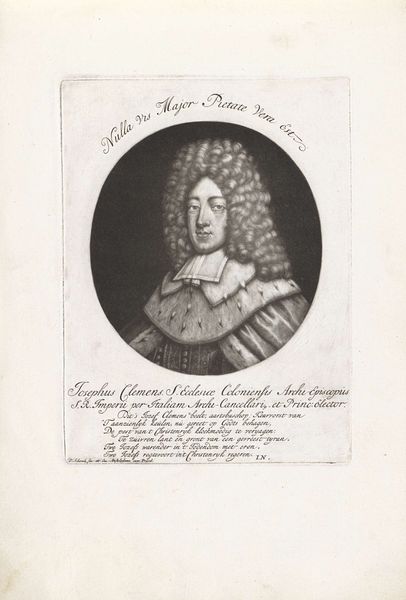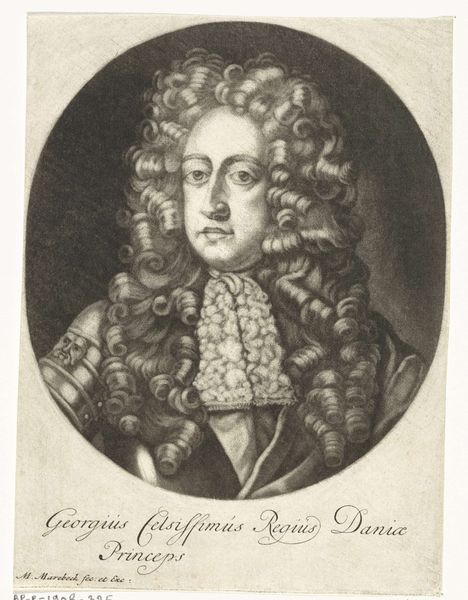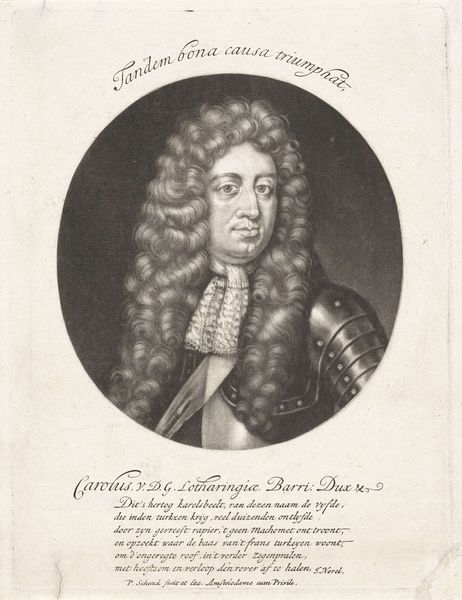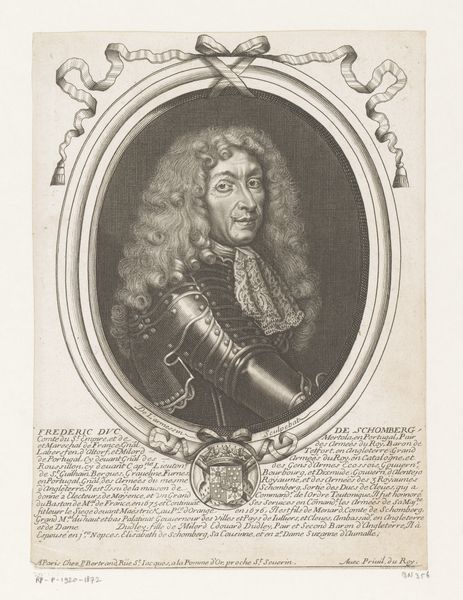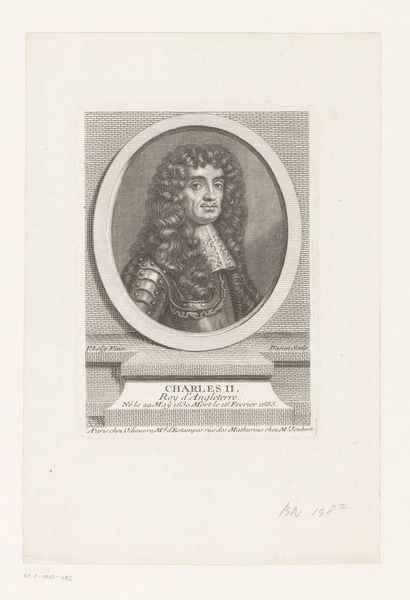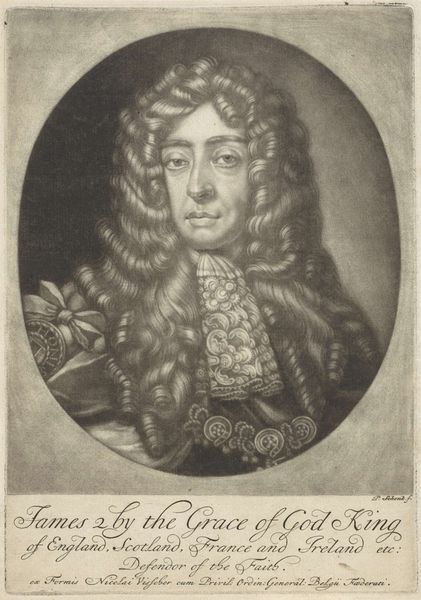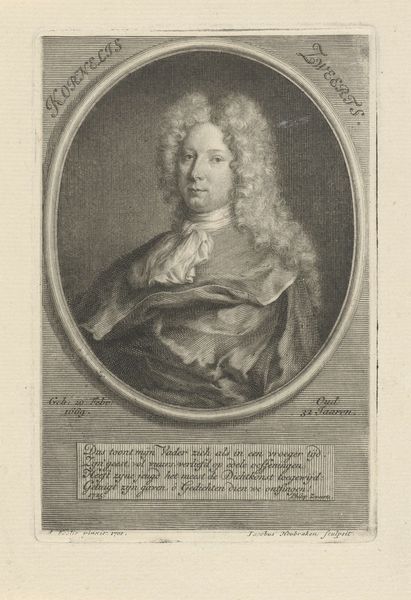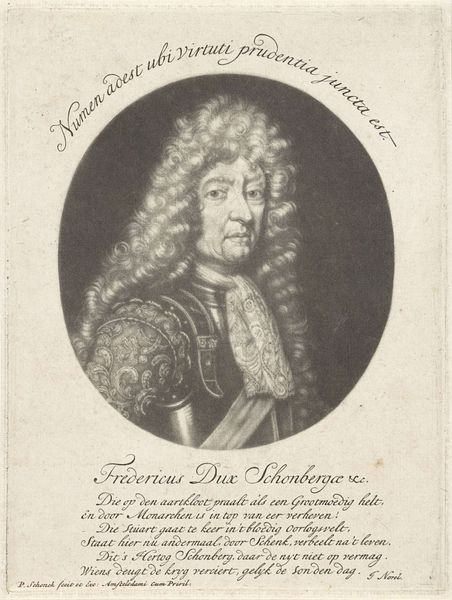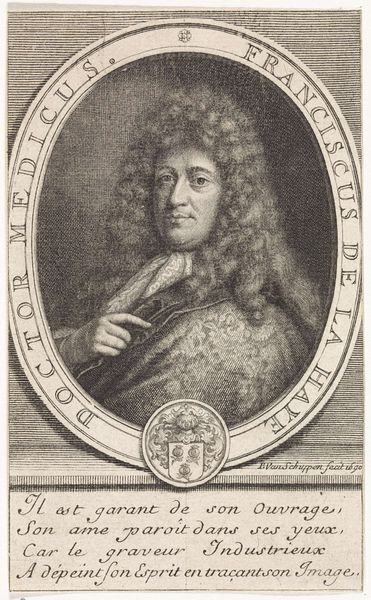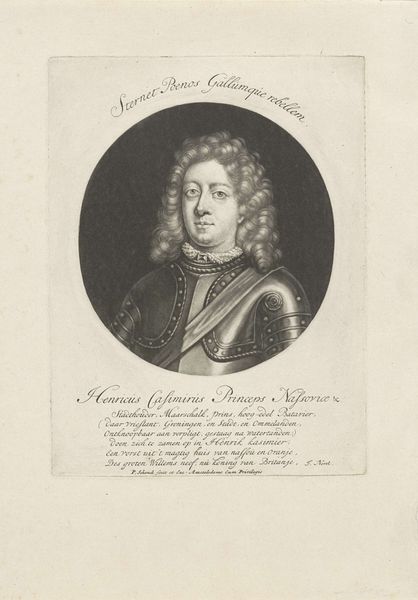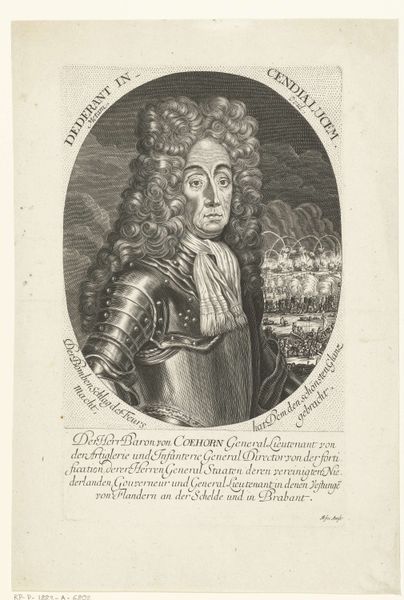
print, engraving
portrait
baroque
old engraving style
history-painting
engraving
Dimensions: height 183 mm, width 137 mm
Copyright: Rijks Museum: Open Domain
Curator: Here we have a portrait engraving of George, Prince of Denmark, crafted sometime between 1670 and 1713 by Pieter Schenk. Editor: The overwhelming visual is a cascading wig, practically a halo of curls. It is the ultimate statement of power, almost burying the man beneath it. Curator: The choice of a print is fascinating here. Prints democratize the image, allowing for wide circulation, but the engraving style gives a crisp, formal depiction, highlighting status through meticulously rendered detail. Editor: It's a strategic projection of dynastic power during a time of great upheaval in Europe. Even in print form, it's designed to impress viewers with George’s regality and supposed virtue—a vital quality for leadership at this time. Curator: Exactly. The Latin inscription, "Est Virtus maxima nosse suos," implies understanding and knowing one’s own, speaking volumes about George's assumed leadership qualities within his inner circle, family and those he considered under his direct charge. This visual and textual language was quite ubiquitous with royal portraiture. Editor: But virtue for whom? Such images functioned as propaganda. They served the interests of a ruling class, glossing over realities of class disparity and the brutal costs of maintaining aristocratic power structures. Think about who benefitted from circulating images of benevolent leadership. Curator: Certainly. But that ideal also held genuine meaning for people. These portraits offered symbols of stability but also the belief, sincere or not, in divinely sanctioned rule during times of immense uncertainty. A kind of hope, visualized through symbolic motifs. Editor: Perhaps... Looking at it with modern eyes, it rather prompts us to question how images of authority are constructed and consumed even today. What symbols do we circulate now, and who benefits from their constant reproduction? Curator: Yes, by investigating those connections between symbol and subject through the ages, we start to find shared human concerns across cultures and eras. Editor: Agreed. By situating historical imagery like this within present dialogues, we begin to comprehend their lasting, transformative force on culture.
Comments
No comments
Be the first to comment and join the conversation on the ultimate creative platform.
